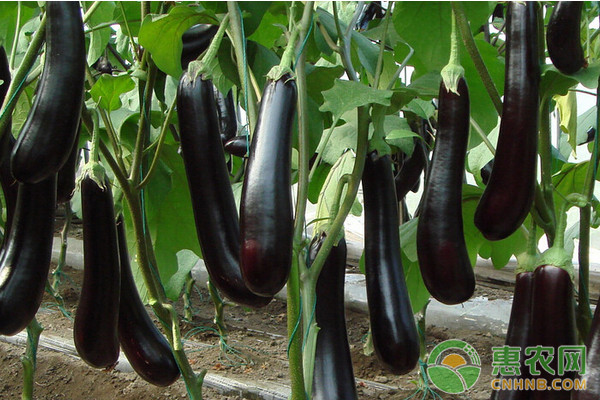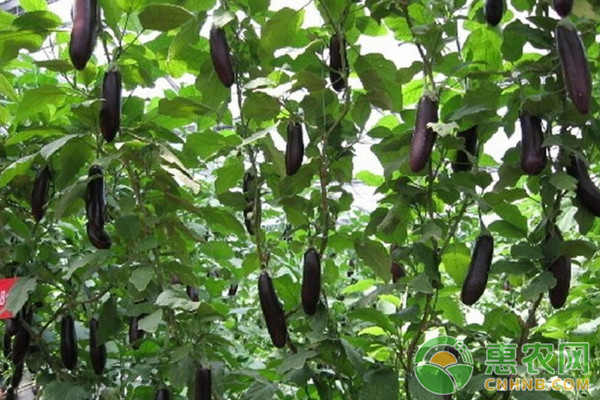Today, Xiaobian wants to talk with you about the high-quality and high-efficiency cultivation techniques of early spring eggplant grafting. After grafting, the eggplant is strong and strong, and the grafted eggplant can increase yield by 40%~50% compared with conventional cultivation. The severely damaged plot can be multiplied. . Grafting of eggplant in early spring has become the most effective method for controlling heavy-duty diseases, and it is also the best way to ensure high-yield and high-efficiency cultivation.

1 eggplant grafting seedling
1.1 Selection of rootstocks and scion varieties
The rootstock variety is selected from Torumbaum. It has strong growth potential and developed root system. It has high resistance and even immunity to four soil-borne diseases of eggplant, such as Verticillium wilt, Fusarium wilt, bacterial wilt and nematode, and it is resistant to cold and drought. It is moisture resistant and is currently used in the production of the main rootstock. The stems are thick and strong at the seedling stage, the grafting operation is convenient, the survival rate is high, and the eggplant produced by grafting has high yield and good quality. According to the local eating habits, the scion varieties are selected to be suitable varieties.
1.2 Determination of the sowing date
In the early spring, the sheds were grafted and seedlings were planted. The rootstocks were sown after soaking and germination in mid-September. The stalks were sown for 25 days later than the rootstocks, grafted from the end of December to the beginning of January, and planted in mid-February.
1.3 germination
Warming the temperature of the incubator: soak the seeds for 48 hours, put them into a cloth bag, put them into the incubator, adjust the temperature, 8 hours at 30 °C, 16 hours at 20 °C, repeat the temperature change treatment, and cast the seeds once a day with clear water, 8 days Can sprout. Hormone treatment: soak for 24 hours with gibberellin at a concentration of 100~200 mg/kg, then soak it in water for 24 hours, place it in a thermostat for temperature-changing treatment and germination, usually 4 to 5 days for budding.
1.4 Sowing
The seedling bed was sprayed with 50% carbendazim 500 times solution, and then the seed of the germinated rootstock was evenly spread on the seedbed, covered with mulch, and the mulch was removed after 3 to 5 days of rootstock seedlings were released. Scion seedlings, seeds, etc. should be disinfected to avoid the attachment of germs to the ear, which can not achieve the purpose of grafting. Seeds can be soaked in warm water at 55 °C for 15 minutes, soaked in 50% carbendazim for 2 hours, or soaked in 0.3% potassium permanganate for 30 minutes. The soil can be disinfected with 100 grams of sulfonic acid and 5 grams of green enjoyment, plus 30 kg of water. , the seedbed is poured through.

1.5 seedlings
When the rootstock seedlings grow to 2~3 leaves, the seedlings are planted in a 10 cm x 12 cm nutrient bowl for grafting operation and colonization. Scion seedlings can be spread without seedlings.
1.6 Grafting
Eggplant grafting is generally carried out by splicing method. When the rootstock seedlings are 5~6 leaves, the stalk seedlings 3~4 leaves are suitable for grafting. First, the rootstocks are kept 2~3 leaves, and the rootstock stems are cut with a blade to remove the upper part. Split from the middle of the stem, cut longitudinally 1~1.5 cm, then remove the scion and keep the upper 2~3 leaves. Cut the lower part with a blade and cut the incision into a wedge shape of 1~1.5 cm long. The size of the wedge should be Similar to the rootstock incision, the scion is inserted into the incision, and the two incision epidermis are aligned and clamped with a grafting clip.
1.7 Management after grafting
After grafting, the seedlings should be moved into the small arch shed as soon as possible, and fully watered. The first 6~7 days are not ventilated, and the humidity is maintained above 95%, 25~28°C during the day and 20~25°C during the night. After the grafting, the first 3 to 4 days should be completely shaded. After the second half of the sunshade, the grasshoppers will be removed as the wounds heal, and gradually ventilated. During the ventilation period, the air humidity should be maintained, and after full survival, it will be transferred to normal management.
2 colonization
2.1 Soil preparation and fertilization
Eggplant is a deep-rooted crop with a long growing season. It is suitable for large water and big fertilizer. Before planting, it is necessary to apply sufficient base fertilizer. Fermented farmyard manure or chicken manure per mus is 8000~10000 kg, cake fertilizer is 300~500 kg, and three-element compound fertilizer is 50. ~100 kg, deep turning 30~40 cm, flat.
2.2 Colonization
Play 2.4 meters wide, from small high ridges, spread 100 cm wide mulch two, according to the width of 70 ~ 80 cm, narrow line 50 ~ 55 cm, plant spacing 40 ~ 50 cm planting, each line 4 rows, per acre planted 2000 ~ 2200 strains. Do not bury the interface when planting, the interface should be 3~5 cm above the ground to prevent the second infestation of the rooting of the scion. After planting, pour small water to promote slow seedlings. The amount of water should not be too large to prevent the ground temperature from decreasing.
3 Field management
3.1 Nutritional Growth Management
After the seedlings are not dried or watered, the seedling management is carried out. The key to this period is to raise the temperature, promote rooting, and make the plants grow vigorously, laying a good foundation for future high yield.
3.2 Water and fertilizer management
When the eggplant is “blinkingâ€, it can be watered and topdressed. The principle of fertilization is to ensure sufficient nitrogen fertilizer and phosphorus and potassium fertilizer. Each acre combined with watering is applied with 10 kg of urea, 10 kg of potassium sulfate and 10 kg of diammonium phosphate. After harvesting the eggplant, the eggplant grows vigorously, and can be combined with watering for topdressing. When topdressing, it can be combined with chemical fertilizer and organic fertilizer. Each time, 20 kg of ternary compound fertilizer or 1000 kg of organic fertilizer is applied per acre. After April, it is necessary to increase the amount of irrigation, pouring large water every week, once every two weeks, but reducing the amount of nitrate nitrogen fertilizer. Potassium dihydrogen phosphate or foliar treasure can also be sprayed in the middle and late stages of the fruit. Pay attention to ventilation and dehumidification after each pouring.
3.3 Pruning
Grafted eggplants have strong growth potential and long growth time. The leaves are not left under the stalks. Generally, the ordinary pruning method is used to remove the fruits according to the eggplant, the eggplant and the four-door bucket. In the middle and late growth stages, the lower old leaves and diseased leaves can be removed, which can be ventilated, light-transmissive, anti-rotation, increase coloration, and improve fruit quality.
3.4 Timely harvesting
When the fruit is physiologically mature, that is, the part of the fruit under the fruit slice is shortened to a lesser extent, it should be harvested in time, not only of good quality, but also does not affect the development of the upper part of the fruit, especially the early harvest of the eggplant. Another principle is that the eggplant grows prosperously, and it is appropriate to receive it late. The harvesting time is suitable for the afternoon. The harvesting should be cut with a scissors to cut the handle.
4 pruning regeneration
As the result of the eggplant rises, the plant grows too tall and tends to fall, and the upper fruit is small and the coloration is not good. Before and after the beginning of autumn, pruning and regenerating at 10 cm above the eggplant part. After pruning, all the leaves on the plant are destroyed, and then 20~30 kg of three-element compound fertilizer per acre, pouring a large water to promote the germination of new shoots. After the new shoots sprout, there are many branches, and when the new shoots are 5~10 cm, leave 2~4 branches of considerable growth retain fruit, and the remaining branches are beaten. Practice has proved that after grafting eggplant pruning, the plant grows strong, the eggplant grows large, the coloration is good, and it is a peak of yield. Generally, the second eggplant can be marketed 30~40 days after pruning. Not harvested, covered with small arch sheds, grasshoppers, delayed to 30 to 50 days after the frost, listed, the benefits are higher.

5 pest control
5.1 Disease
After grafting, the eggplant overcomes the most important soil-borne diseases such as Verticillium wilt and Fusarium wilt, and the incidence is lighter, but there are also brown-striped diseases and cotton blight diseases that cause rotten eggplant in the field. The chemical control can be controlled by 75% Daknin 500 times, 64% anti-virus 矾 500 times, 72% frost urea, manganese zinc 600 times. For the control of bacterial wilt, 72% of agricultural streptomycin sulfate 4000 times solution, or 77% can kill 400~500 times liquid, or 25% Lycopene copper water 500 times liquid, etc. The control of disease, eggplant brown disease, eggplant blight can be sprayed with 64% anti-virus 矾 500 times liquid, or 58% metalaxyl · manganese zinc 500 times liquid spray.
5.2 Pests
The main pests of eggplant are red spider, sassafras, and twenty-eight-star ladybug. In recent years, the sassafras has a serious development trend, mainly affecting young leaves and fruits. After the young leaves are damaged, the leaves are curled downwards, the leaves are oily on the back, the fruits are damaged, the fruit surface is rough, and the peel is cracked when severe. Flowering taro, losing edible value. The chemical control of the sassafras and red spiders should be sprayed with 1.8% avermectin 3000 times, 5% Nisolron 1500 times, 15% Daxiling 2000 times, 73% gram of 1000 times. Spraying mainly on the young part and the back of the leaf, and it should be even and meticulous. The control of tobacco budworm and whitefly can be sprayed with 2.5% kungfu 500 times liquid or 20% speed killing 1000~2000 times liquid.
With the expansion of eggplant cultivation area and planting year after year, various soil-borne diseases have become quite common, and the degree of damage has become more and more serious. The high-quality and high-efficiency cultivation techniques of early spring eggplant grafting have become a necessary means to improve the yield and efficiency of eggplant. Therefore, the vegetable farmers who have not yet mastered come to Huinong.com.
Male & Female Health,Protecting Prostate Extract,Strengthening Yang Extract,Maca Root Extract Powder
Shaanxi Zhongyi Kangjian Biotechnology Co.,Ltd , https://www.zhongyibiotech.com